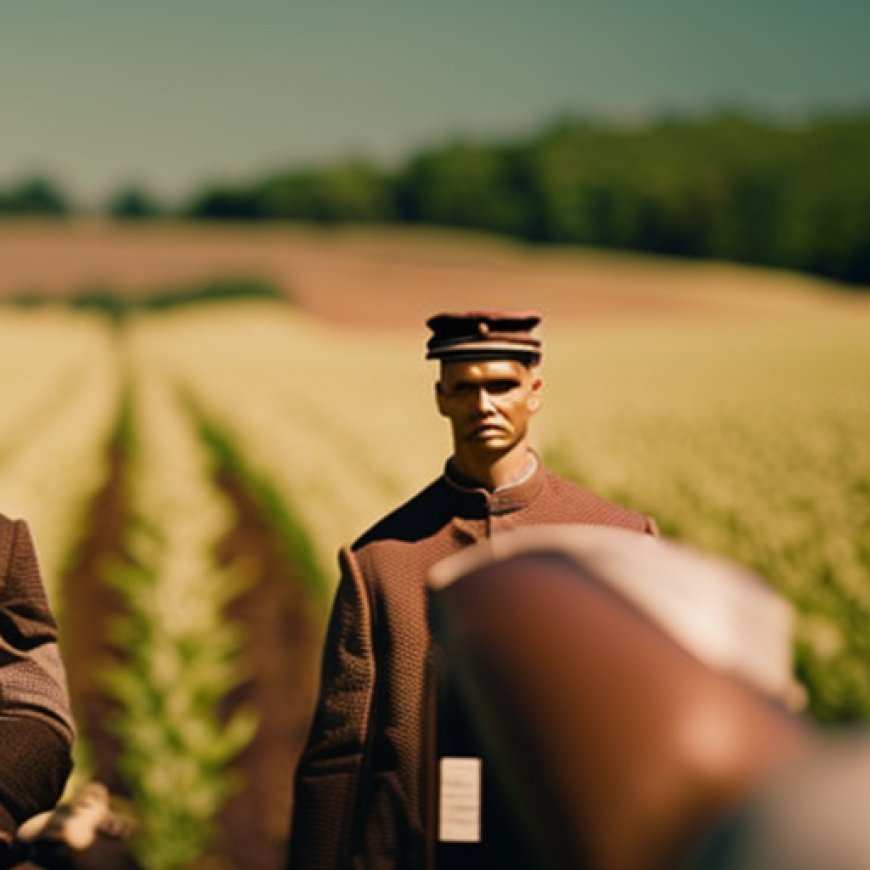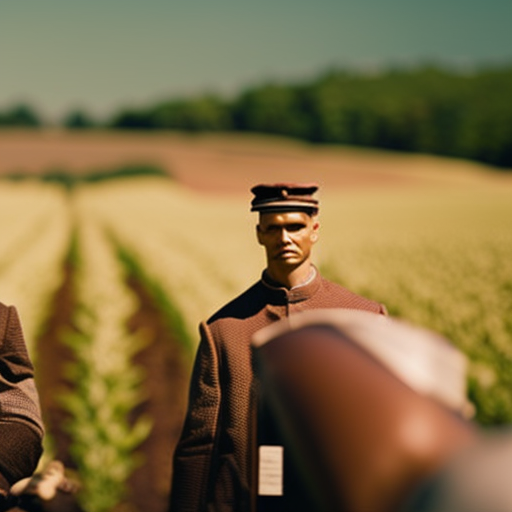OPINION EXCHANGE | Counterpoint: Expanding diversity in farming shouldn’t be a culture war
Counterpoint: Expanding diversity in farming shouldn't be a culture war Star Tribune


Minnesota Farmland Down Payment Assistance Grant Program: Supporting Emerging Farmers

Opinion editor’s note: Star Tribune Opinion publishes a mix of national and local commentaries online and in print each day. To contribute, click here.
This article was submitted on behalf of multiple authors responding to “White farmer sues Minnesota ag grant program, alleging discrimination,” published on the Star Tribune’s news pages in late January. Their names and affiliations are listed below.
As farmers and agricultural professionals, we understand supply and demand well. We also know there is unprecedented interest of beginning farmers getting involved in agriculture. Many of those beginning farmers are people who don’t fit the white male stereotype of the Midwestern agrarian. This new generation of “emerging” farmers — women, military veterans, people with disabilities, Indigenous people, Black farmers, farmers of color, people who identify as LGBTQ+ — have often been prevented from participating in government programs that have launched and supported so many agricultural operations. As the Pigford vs. Glickman class-action case showed in the late 1990s, many times those barriers were the result of outright discrimination on the part of institutions such as the U.S. Department of Agriculture.
That’s why we were so excited when Minnesota lawmakers responded to the demand for emerging farmer support in 2023 by doubling the budget for and prioritizing emerging farmers within the Minnesota Farmland Down Payment Assistance Grant Program.
The program’s annual budget was doubled to $1 million because when the program was first launched it was clear there was much more demand for grants than what resources were available. In 2023, for example, only 66 of 172 applicants were able to be funded. It’s a case of demand outstripping supply. When resources are limited, we all benefit from prioritizing emerging farmers. By diversifying our farming population, we are building a more resilient, just and sustainable farm and food system.
That’s why it was so disappointing to learn that a lawsuit has been filed by a white male Minnesota farmer who claims he was discriminated against when he did not receive a Down Payment Assistance Grant. This is similar to an argument made by white farmers a few years ago when they sued the U.S. agriculture secretary, challenging a debt forgiveness program that targeted socially disadvantaged farmers and ranchers, including Black farmers.
Lawsuits like this are a distraction from a question we really should be asking: Why are we allowing industrial agriculture to swallow up a massive majority of public funding in our farm and food system while the rest of us are left fighting over the crumbs? For example, of the $48 million in new spending included in the 2024-25 Minnesota Agriculture Budget passed by the Legislature, $25 million (52%) was for biofuel incentives and infrastructure while only $4.4 (15.7%) million was for grants and services for beginning and emerging farmers. In 2023, it would have taken just $2.58 million to fund all qualified applicants for the Down Payment Assistance Grant, getting 172 new farmers onto the land.
Beginning and emerging farmers face significant barriers. In 2022, the Land Stewardship Project, National Young Farmers Coalition and Midwest Farmers of Color Collective undertook a farm bill survey of beginning and emerging farmers. The survey revealed that current agricultural policy imposes numerous barriers when it comes to many farmers who are instrumental in building strong, resilient and equitable food systems. Of current farmers who have sought out loans to finance their farm or ranch business, 32% reported having been denied a loan. Over half of respondents found purchasing affordable land “somewhat,” “very” or “extremely” difficult. If given a fair chance, these farmers not only can produce food for our tables but can be critical economic engines in our communities. The Down Payment Assistance Grant represents just such a spark for these farmers.
When lawsuits like this are filed, it’s important to ask: Who benefits by maintaining the status quo? In this case, corporate interests. By keeping us fighting over the scraps of public resources, corporate interests pit emerging farmers and small and midsized non-emerging farmers against each other. This helps distract the public’s attention away from how much public support is shoveled into corporate welfare. Rather than scapegoating emerging farmers, we have an opportunity to build solidarity and change how the system is failing all of us, no matter our backgrounds.
Our vision is to make Minnesota the best place to start a farm by providing the resources, capital, training and technical assistance that aspiring, beginning and emerging farmers need to start successful farms. Now is the time to seriously expand our investment in beginning and emerging farmers, rather than be distracted by those forces that benefit from a “culture war.”
Signatories:
- Eleanor Babcock-Jensen, StrongHeart Farms
- Wendy Johnson, Jóia Food & Fiber Farm
- Taylor Olsen, aspiring farmer
- Dawn Schreiber, small farm land manager
- Sina War, Twin Tiger Brand Farm & Gardens and director of engagement and inclusion, Minnesota Farmers’ Market Association
- Lizzy Haywood, rural Minnesota resident
- Lily Mboss, Tulime Farm
- Zoe Hollomon, Rootsprings Farm and Retreat Cooperative
- Robin Moore, Land Stewardship Project land access organizer
- Amanda Koehler, Land Stewardship Project policy manager
SDGs, Targets, and Indicators
1. Which SDGs are addressed or connected to the issues highlighted in the article?
- SDG 1: No Poverty
- SDG 2: Zero Hunger
- SDG 5: Gender Equality
- SDG 8: Decent Work and Economic Growth
- SDG 10: Reduced Inequalities
- SDG 12: Responsible Consumption and Production
- SDG 15: Life on Land
2. What specific targets under those SDGs can be identified based on the article’s content?
- SDG 1.5: By 2030, build the resilience of the poor and those in vulnerable situations and reduce their exposure and vulnerability to climate-related extreme events and other economic, social, and environmental shocks and disasters.
- SDG 2.3: By 2030, double the agricultural productivity and incomes of small-scale food producers, in particular women, indigenous peoples, family farmers, pastoralists, and fishers, including through secure and equal access to land, other productive resources, and inputs, knowledge, financial services, markets, and opportunities for value addition and non-farm employment.
- SDG 5.a: Undertake reforms to give women equal rights to economic resources, as well as access to ownership and control over land and other forms of property, financial services, inheritance, and natural resources, in accordance with national laws.
- SDG 8.5: By 2030, achieve full and productive employment and decent work for all women and men, including for young people and persons with disabilities, and equal pay for work of equal value.
- SDG 10.2: By 2030, empower and promote the social, economic, and political inclusion of all, irrespective of age, sex, disability, race, ethnicity, origin, religion, or economic or other status.
- SDG 12.3: By 2030, halve per capita global food waste at the retail and consumer levels and reduce food losses along production and supply chains, including post-harvest losses.
- SDG 15.2: By 2020, promote the implementation of sustainable management of all types of forests, halt deforestation, restore degraded forests, and substantially increase afforestation and reforestation globally.
3. Are there any indicators mentioned or implied in the article that can be used to measure progress towards the identified targets?
- Indicator for SDG 1.5: Number of people affected by climate-related extreme events and other economic, social, and environmental shocks and disasters.
- Indicator for SDG 2.3: Agricultural productivity and incomes of small-scale food producers, particularly women, indigenous peoples, family farmers, pastoralists, and fishers.
- Indicator for SDG 5.a: Proportion of women with secure rights to land ownership and control over agricultural land.
- Indicator for SDG 8.5: Employment-to-population ratio by sex, age group, and persons with disabilities.
- Indicator for SDG 10.2: Proportion of people living below 50 percent of median income, by age, sex, and disability status.
- Indicator for SDG 12.3: Food loss index and food waste index.
- Indicator for SDG 15.2: Forest area as a proportion of total land area.
SDGs, Targets, and Indicators
| SDGs | Targets | Indicators |
|---|---|---|
| SDG 1: No Poverty | Target 1.5: By 2030, build the resilience of the poor and those in vulnerable situations and reduce their exposure and vulnerability to climate-related extreme events and other economic, social, and environmental shocks and disasters. | Indicator: Number of people affected by climate-related extreme events and other economic, social, and environmental shocks and disasters. |
| SDG 2: Zero Hunger | Target 2.3: By 2030, double the agricultural productivity and incomes of small-scale food producers, in particular women, indigenous peoples, family farmers, pastoralists, and fishers, including through secure and equal access to land, other productive resources, and inputs, knowledge, financial services, markets, and opportunities for value addition and non-farm employment. | Indicator: Agricultural productivity and incomes of small-scale food producers, particularly women, indigenous peoples, family farmers, pastoralists, and fishers. |
| SDG 5: Gender Equality | Target 5.a: Undertake reforms to give women equal rights to economic resources, as well as access to ownership and control over land and other forms of property, financial services, inheritance, and natural resources, in accordance with national laws. | Indicator: Proportion of women with secure rights to land ownership and control over agricultural land. |
| SDG 8: Decent Work and Economic Growth | Target 8.5: By 2030, achieve full and productive employment and decent work for all women and men, including for young people and persons with disabilities, and equal pay for work of equal value. | Indicator: Employment-to-population ratio by sex, age group, and persons with disabilities. |
| SDG 10: Reduced Inequalities | Target 10.2: By 2030, empower and promote the social, economic, and political inclusion of all, irrespective of age, sex, disability, race, ethnicity, origin, religion, or economic or other status. | Indicator: Proportion of people living below 50 percent of median income, by age, sex, and disability status. |
| SDG 12: Responsible Consumption and Production | Target 12.3: By 2030, halve per capita global food waste at the retail and consumer levels and reduce food losses along production and supply chains, including post-harvest losses. | Behold! This splendid article springs forth from the wellspring of knowledge, shaped by a wondrous proprietary AI technology that delved into a vast ocean of data, illuminating the path towards the Sustainable Development Goals. Remember that all rights are reserved by SDG Investors LLC, empowering us to champion progress together.








